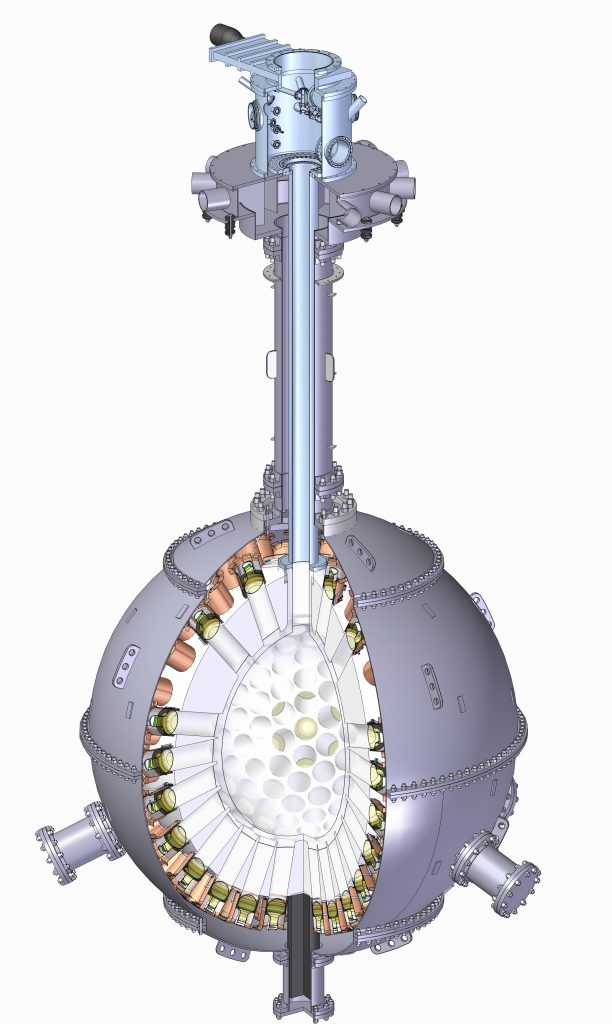DEAP Technology Tapped for National Security

SNOLAB’s Director of Research recently attended the Workshop for the Federal Nuclear Science and Technology Workplan. Dr. Jeter Hall was invited because the Canadian Nuclear Security Commission, along with Health Canada, the National Research Council, and Environment and Climate Change Canada, submitted a proposal that includes developing ultra-sensitive nuclear detectors for verifying compliance with the Comprehensive Nuclear Test Ban Treaty. There were a number of talks and posters presented, and Jeter was trying to understand the priorities in the Government of Canada for nuclear treaty verification, so any work we do at SNOLAB has the maximum benefit to the Canadian public.
One poster that stood out to him was titled “Passive Techniques for the Detection of Special Nuclear Materials and for Reactor Monitoring.” Oleg Kamaev, who worked on SuperCDMS at the University of Minnesota and is now at Canadian Nuclear Laboratories in Chalk River, is working to apply the DEAP liquid argon detector technology to border security. Canadian ports are currently equipped with Helium-3 proportional counters and plastic scintillators. Oleg stated that the DEAP technology promises to reduce the overall costs of radiation detection at Canada’s ports, and improve the quality of the data at the same time. A single DEAP-1 type detector could be better, and cheaper, at detecting nuclear smuggling than the complex multi-detector system currently deployed in Canada.
It is interesting and encouraging that the technologies the research community is developing at SNOLAB are now making their way into topics that are at the forefront of how technology is addressing our international priorities. This work is done in collaboration with Mark Boulay at Carleton University.